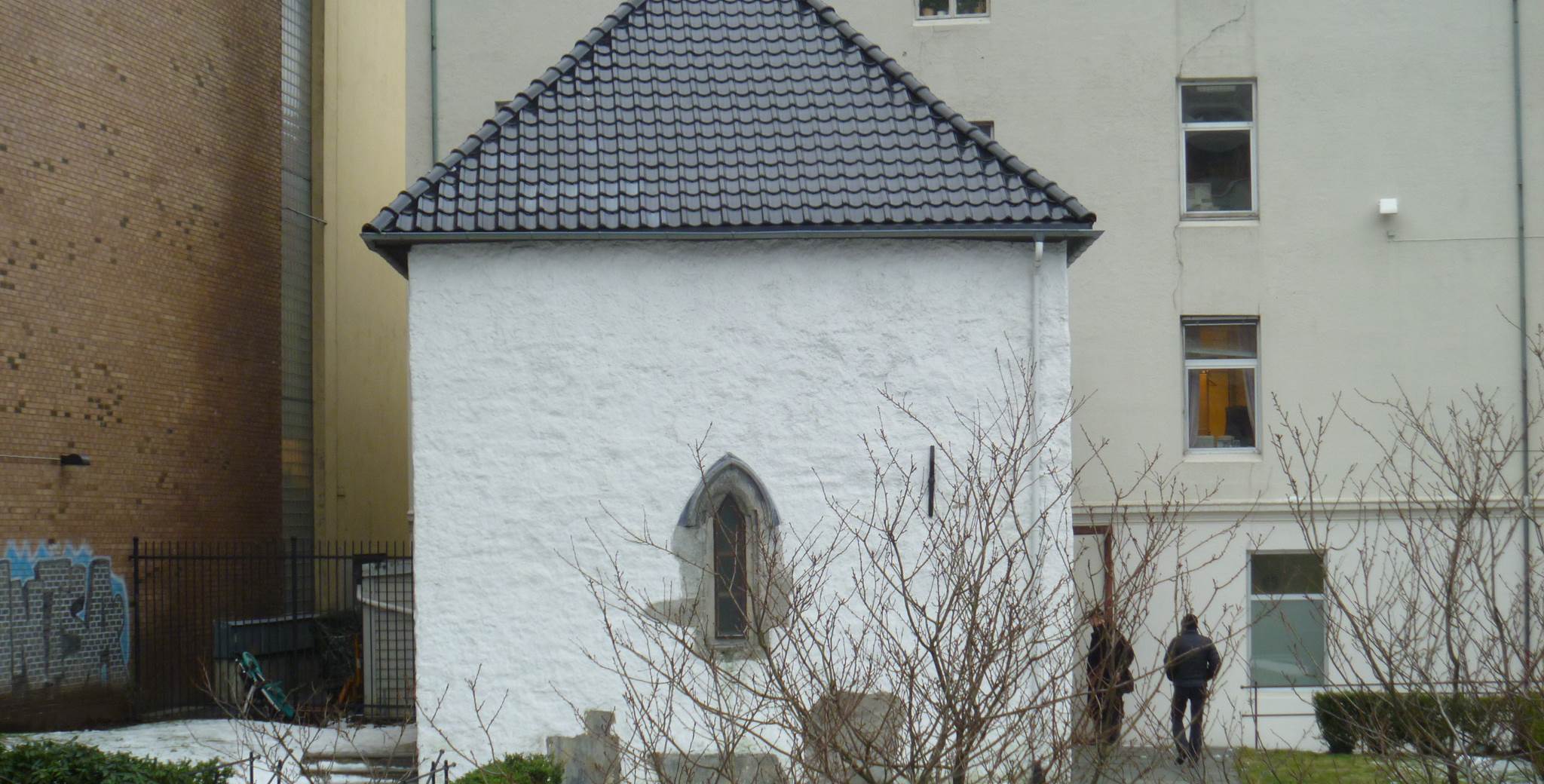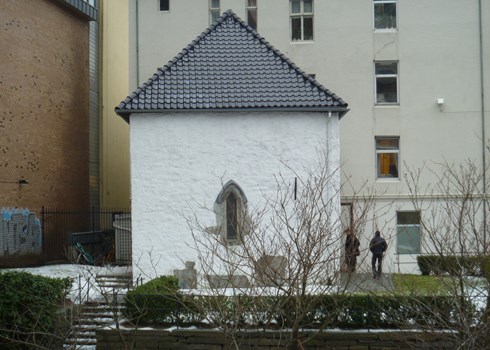

Bergen, Hordaland (Vestland)
Owned by the National Trust of Norway since 1892.
Convent remains above ground. The convent was probably built around 1130, and today the base of the tower (approx. 1130) and the southern choir chapel (last half of the 13th century) are all that remain of the complex. The external measurements of the single-storey tower base is 8.6 x 8.6 metres, and it was originally ashlar-clad. Today, it is parged. Inside the tower base, the groin vault with rounded arches is preserved, and the room functions as a memorial hall for victims of World War II.
The southern choir chapel is a rectangular building with external measurements of 8.6 x 7.2 metres, and inside there is a magnificent room with two groin vaults with pointed arches. The church extended eastwards from the tower and was extended to the east with a new chancel and choir chapels during the second half of the 13th century. The churchyard was located north of the church, and the convent complex was probably to the south.
The convent’s affiliation. There is some uncertainty about which order the convent was affiliated to, but information from the late 15th century indicates that it was a Cistercian convent. In 1507, the buildings were taken over by the hospital brothers of the Order of St. Anthony, an order dedicated to nursing and running hostels. Some years later, in 1528, Nonneseter became the first convent in Norway to be secularised, and King Frederick I gave it to Vincents Lunge. The property remained in the Lunge family until 1705. The Lungegård complex burnt down in 1891.
Things to do in the area: Bergen is one of Norway’s most important tourist destinations, and to many it is the gateway to the fjords and mountains of Western Norway. The World Heritage Site Bryggen, the Fish Market, Mount Ulriken, the Fløibanen funicular, the Bergen townmuseum, the KODE museums – there is no shortage of tourist attractions in Bergen.
Sources: En reise gjennom norsk byggekunst, ed. Terje Forseth. National Trust of Norway, 1994. ‘Klosteranlegg i Norge. En oversikt’. Fortidsminner issue 68. 1987
Opening hours
- Open at events
Ticket prices
Visit us
Kaigaten 35015 Bergen
Contact us
- Epost: hordaland@fortidsminneforeningen.no
- Tlf: 559 02 154


